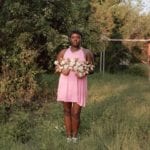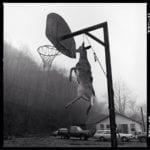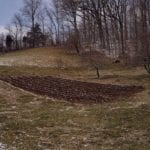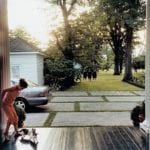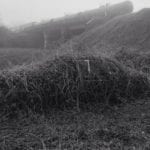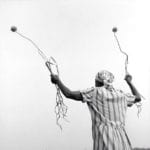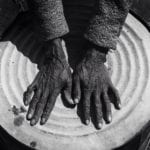November, 2014
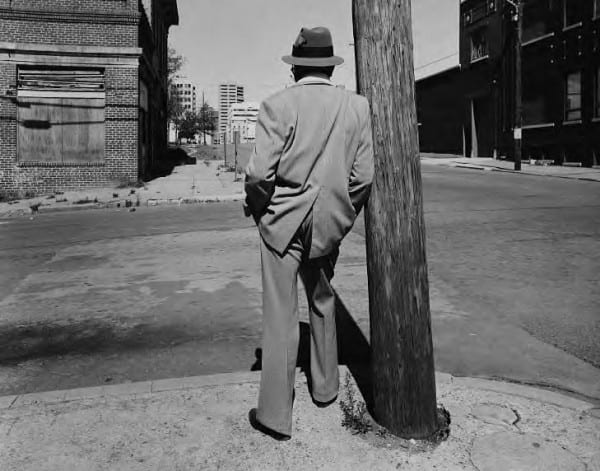
Since its founding in 2012, The Do Good Fund has focused on building a museum-quality collection of contemporary Southern photography, including works by emerging photographers.
Do Good’s mission is to make these works broadly accessible through regional museums, nonprofit galleries and nontraditional venues, and to encourage complimentary, community-based programming to accompany each exhibition.
Jerry Atnip recently had a conversation with Alan F. Rothschild, Jr., at his office in Columbus, Georgia.
Jerry Atnip: What path led you to create The Do Good Fund?
Alan F. Rothschild, Jr.: I think there were several paths that came together. I was very fortunate to have parents that dragged me to various museums and cultural events. So, I’ve been going to museums all my life and had an early interest in photography. I’m not very artistic, but photography is something I could do. I never could do it very well, but it was my artistic outlet.
JA: Did your interest in photography begin by observing photographs or creating them?
AR:Really it was a combination of both. My real interest in photography and probably the reason that we are sitting here talking about it today, is that in high school and college where I was a history major, almost all the courses were taught with survey textbooks, so the Civil War would be covered in six pages, the Civil Rights movement would be taught in six pages. The text would be accompanied by charts, but I don’t remember one of those charts. For instance, they would show the number of casualties at Antietam and list the other battles of the Civil War and that really didn’t mean anything to me. I didn’t understand what 50,000 casualties meant. The six pages on the Civil War didn’t show me what it was like. However, you could flip the page and there would be a Matthew Brady image of dead soldiers in a trench. That gave me a much better idea about the horrors of war than bar charts and the chapters in the book. I found the same thing happened with the story of the Depression. There would be statistics of the annual income of these impoverished, itinerant farmers. I didn’t really understand what that meant until I turned the page and viewed a Walker Evans image that showed how sparse the cabins were, the ragged clothes people wore and how thin they were. In that one image, I learned so much more about the suffering in the Great Depression than any number of textbooks that I had read.
JA: Did that make you feel a need to start making images to help others in a similar way?
AR: It affected me in a couple of ways. I became interested in the work and wanted to know more about the New Deal Era photography program and wanted to discover more of that work. Not only did I want to learn more about it, I felt it was very beautiful imagery. I became interested in it in how it documented that time in our country, but also to learn more about the photographers. Yes, it caused me to pick up a camera and take pictures, but I realized very quickly that I wasn’t a Walker Evans, so I knew my limitations. I have a camera, but don’t use it frequently. My interest now is in images as works of art documenting the story of place and people.
JA: Did you start a personal collection before The Do Good Fund?
AR: I went to see Jane Jackson, then-owner of Jackson Fine Art in Atlanta, to view some wonderful works there and realized that as a young professional with two young children, it was not going to be possible to build the kind of collection that I wanted to build at that time. So, I never did start a personal collection.
JA: How then, did The Do Good Fund begin?
AR: I’m on the board of a private foundation and they allow each trustee to allocate a modest sum of money. Since I had been interested in the arts, I was allocating some small grants to local and regional museums, such as the Columbus Museum, LaGrange Art Museum, Georgia Museum of Art. I realized that those small amounts weren’t making that big of an impact. For instance, the Georgia Museum of Art was going to continue doing what they were doing whether or not they got this little fund or not. So, I decided to dig a little deeper and think about a way to put those grants together and try to make a larger difference. The seeds of The Do Good Fund grew from these trustee grants. I also saw that there weren’t that many places that were committed to photography and with two or three exceptions, the ones who did weren’t located in the South. And the South was behind other places in the country to realize the significance of these images or have the resources to collect them.
I’m a huge believer in museums and even judge a community by the quality of their museums. When I travel to other places, I go to their museums, but in the South, we don’t have that many great museums. Generationally, people don’t seem to be visiting museums like they used to. Museums have a lot of competition to receive our attention. If one were fortunate enough, like you and I are, to go to museums and they had an image you were interested in seeing, there is probably a 98% chance that what you wanted to see would be in storage and not on display. What I want to do with The Do Good Fund will be a complement to museums and will be available to audiences that don’t have access to them. I want to share the images with audiences through non-conventional venues such as storefronts, galleries, community centers, so people can see these great works.
JA: How do you go about selecting venues to show the collection?
AR: There is a combination of ways. Ideally, we want to get the word out and have requests come to us. The collection is available to any institutional community group that would like to display it. We get really excited when someone comes to us and is very energized about hosting the collection in their community and they have some great twist on the exhibition and possibly community programming.
The first show we did was a test run at Columbus State University’s Art Department. They offered us four interns who handled the entire show. They came up with the theme, the title of the show, handled the marketing, found a vacant storefront, hung the show and designed a couple of community-based programs. They had a panel discussion with three or four of the photographers that they selected and invited to Columbus. They had the visiting photographers teach a class at a local high school and at Columbus State, or they took students out for a day of shooting and critiqued their work. To me, that was a perfect scenario. The people that were interested in seeing the images were able to get interaction with the photographers at the panel discussion and at the opening. The photographers were also able to interact with students on a personal level.
The Do Good Fund is actually a 501c3 public charity and initially we adopted a mission that was pretty broad. It was preserving Southern art and culture and making it broadly accessible. I already had the idea of recognizing and honoring Southern things and already had photography as one of those things. I also had a couple of other ideas that interested me. Architecture is one of those, for example. I have always been intrigued by the Rosenwald School initiative in the South. I still have hopes that as Rosenwald schools are redone, they could become great venues for us. Many have been turned into community centers in rural parts of the South and they would be fantastic to host the collection. I hope to be able to build a network of friends that could introduce us to some Rosenwald schools.
I’m also very intrigued by Auburn’s Studio program. They have some beautiful projects in the Black Belt of Alabama.
JA: What are the costs to the hosts associated with mounting an exhibition?
AR: At this point, we haven’t been charging anyone to exhibit the show. As we build our collection, we soon want to be at a point where all the shows wouldn’t be the same. The curators at the different venues are going to be able to select the images that appeal to them. We got a call recently from East Tennessee State University wanting to do a show based on Women’s History Month and feature the female photographers in the collection. At some point I want the collection to be of a size where shows could be curated of just portraits or landscapes or images of Georgia, for instance.
So, our first goal was to build a collection that was large enough to travel. It has been a learning experience. We knew we had to get serious about insurance. The collection is insured, so that helps a lot when you go to a venue that is not regularly in the business of showing work because they might not have insurance for that purpose. We do ask people to arrange to pick up and return the images. We have not yet gotten into building crates and packing the collection for shipping long distances. Perhaps in time we will go that route, but right now we don’t ask the institutions to pay anything. We ask them to make an investment in programming and have community events tied in with the showing.
JA: How large is the collection?
AR: We have around 85 pieces now.
JA: Do you have a goal for annual acquisitions?
AR: No. We’ve been through two rounds of acquisitions. We were interested in getting some good quality images in the collection and not able to go after some of the more expensive images by better known photographers. We thought it was more important to go for good photographs by really good photographers, but ones that were not fetching big dollars by auction houses. For the near future, we are going to be more focused on possibly getting photographs by some better known photographers. For example, one of the last acquisitions we made was a couple of images by William Christenberry. We felt like we had enough images to start traveling the show, which allowed us to start focusing on the works of some bigger name photographers.
We are also very committed to lesser known photographers, whether they are emerging photographers or mid-career photographers that have not had a great deal of exposure yet. We are continuing to pursue works by them in parallel with the work of the better known artists.
JA: Is your acquisition budget public knowledge?
AR: No, it’s not. But when you have an acquisition budget, you quickly realize that it has to cover the cost of the piece, the framing, storage and insurance. If you have a budget of x, then you might have half of that to purchase the piece, then the rest goes to those other items I mentioned.
JA: Who is making the acquisition decisions?
AR: I’m involved in each acquisition, but The Do Good Fund has a board of three individuals. We go through acquisitions on an annual basis and we are funded annually. We establish our budget and develop a short list of images. Some decisions are intentional and sometimes there are opportunities that present themselves to us that we weren’t expecting. If I had a consultant that was making the decisions, it would have a tendency to be their collection. At the same time, if I don’t get the input from other people, we could miss some opportunities to make better decisions. In music, sometimes you hear a song that is catchy and you love it, but the tenth time you play it, you don’t like it as much. There are a lot of images that I love when I first see them. I’ve learned to be aware of how an image impacts you the fourth or fifth time you see it. If it still affects you the same way, you know you have a keeper. It’s a much different decision when you are acquiring pieces that you want to keep in a collection for a very long time. We also have lots of friends, that we call informal advisors, that are gallery owners, photographers, educators, that have been great to help.
JA: Do you have a plan in your mission for de-accessioning pieces?
AR: That’s a great question. When we had ten pictures, that was the last thing we were thinking about. My exit strategy is that, at some point, The Do Good Fund will become too big for our volunteer efforts or it’s going to outlive me or the board. The plan is that if it ever becomes unworkable for any reason, we plan to give it to one or more regional museums that are interested in photography. So, with the exception of our emerging artist pieces, which still have high standards, but not held to the same standards as our other acquisitions, we ask ourselves if the image is one that a strong regional museum would want to have in their collection.
I can start to see now that with limited storage and an all volunteer effort, the size of the collection can only grow to a certain number. We are 85 images now and we probably have capacity for 150 images. When we get up over 200 images we are going to have to have a way to get these pieces to someone else. Besides the museums, it might be that some will become permanent public art and find locations that have no budget for this quality of work.
JA: Are any of your purchase decisions based on the possibility that the piece might be worth more tomorrow than today?
AR: No, they’re not. And that has created an interesting dynamic. We are a very different customer than other people who buy photographs. We are a public charity and when we purchase a piece, it belongs to the public. If that piece is ever sold, the money will be reinvested back into the charitable mission of the fund, which probably means that it will buy more art. I don’t foresee in the near future de-accessioning a piece. It is more likely that we will be giving away art to a compatible public or charitable institution.
JA: You’ve mentioned purchasing work from galleries. Do you also make a practice of acquiring directly from artists?
AR: Yes. It’s wonderful to speak directly to photographers. We make some potential buying decisions from digital images.
JA: Well, that’s not ideal, is it?
AR: No. It’s tough. When you go to a museum and you see a Sally Mann or Mark Steinmetz image, you have a feel for what another image from them is going to look like. So if you see an image of theirs digitally, you’re going to have an idea of what you’re going to get. Galleries have been great to allow us to see a large number of prints, but some artists we have in the collection are not represented by a gallery or have very limited representation. Certainly in the southeast, there aren’t a lot of galleries that have a serious commitment to photography. It is really enjoyable to work directly with the artists. The stories behind the images are really what excite me about the works.
I come to this a bit differently than some other collector in that I am much less interested in the technical issues, such as what kind of camera was used. I am much more interested in the story that the image tells about the South. The South of the past, the South of the present. It goes back to my experiences as a student. I know personally that the pictures of the South told me a lot more about the South than any number books did. I’ve also learned by looking at these beautiful works that when I walk down the street, I see so much better. I realize that I now appreciate a lot of the everyday things I took for granted before.
JA: I understand your statement about being more interested in the story over the technical details of the process, but I would think that there is a vetting process that takes place to insure that these images will be of an archival nature so they will be around for generations.
AR: Absolutely. Since part of our mission is to collect museum quality images, that is very important. One of the advantages of working with a gallery is that they are going to be doing that vetting themselves. The imperfect images are not going to be in the gallery. With some of the emerging artists, they just don’t have access to some of the same equipment to use. They can have a beautiful image, but they could still be in the learning curve of producing archival work.
JA: I’ve noticed a wide cross-section of images in the collection. Is there a specific direction you follow with acquisitions?
AR: We are concentrating on images taken in the South since 1954. The photographer does not have to be a native Southerner, but we are not interested in native Southerners taking images in other places. Let Us Now Praise Famous Men was a textbook in at least two of my history courses. While Agee’s writing was incredible, it was Walker Evans’ photographs that really drew me in. I have the opportunity to go to Hale County, Alabama, every year and drive by scenes that are still there from when Evans took pictures of them. The store in Sprott, Alabama, is still there, but looks a lot different today. As you walk through the Black Belt of Alabama where he photographed, you are walking through the more recent steps of William Christenberry. I found the green warehouse that Christenberry has photographed since the sixties. Seeing in real life the places that those two great photographers documented is really fascinating.
JA: Why 1954?
AR: We had to pick a finite time period and 1954 was an important year in the United States with the Brown v. Board of Education decision. So we picked that date as the starting point.
With my interest in documentary style photography, we are interested in pieces that have an authenticity to them. We’re not interested in abstract work. We’re not buying these photographs purely as art. Our hope is that these are great photographs and will stand on their own as works of art. It is important that they do meet the museum quality standard that we set for ourselves.
I come at this from a history and cultural standpoint. I want to put these pictures up and have people come look at them, to trigger stories in their lives and give them an appreciation for where they live, so it’s the stories they tell that are as important to me as the art side.
JA: Is there a conscious effort to have diversity in photographers you collect?
AR: There is an effort to insure that there is great diversity in the places and people that are pictured, as well as an interest in making sure that there are all different types of photographers. I don’t think you can fully tell this story without having it interpreted by many different sets of eyes.
JA: I noticed you have recently added a group of Gordon Parks’ images to the collection.
AR: We had an opportunity this summer to work with a gallery with that acquisition. It will be completed in January 2015, but they have been very generous to allow us to begin showing some pieces from it. Gordon Parks did a series on segregation in the South for an article in Life magazine in 1956. It fits very well with the story we are telling. We have also been able to acquire that issue of Life magazine as well, so when we tour this, not only will we have his beautiful framed images, we will show the magazine, also.
JA: There seems to be a national and even international interest in images of the South. Do you plan to tour the collection outside the South?
AR: That’s a great question. When we first put this initiative together, our primary interest was sharing these works with the people of the South and part of the reason was because they are the subjects of the work. I wondered if any of the subjects had actually seen these photographs they’re in. I have a very strong interest in the people of the South seeing it. Our website receives visitors from all over the world. We have a large number of people from Japan that view our site. We have a lot of visits from New York. So, as you said, I believe there is a large interest in these photographs way beyond the South.
I believe that the images in the collection individually and collectively, will help us understand who we are, how we got here and where we might be going, and for me they do it much more effectively than history books have done.
JA: The initiative’s name is intriguing. There must be a story about its selection.
AR: While driving around Hale County chasing Evans and Christenberry, you also come across the great work of Auburn University’s Rural Studio program, an architectural outreach program. Their campus is located in Newbern, Alabama, which is in Hale County just below Greensboro. Samuel Motbee was the cofounder of that program and he believed that poor people deserved beautiful houses, also. He felt that architects had a social component to their craft. When students finished their training with him, he would tell them to go out and Do Good. I feel the same way. The people of the South whether rich or poor deserve the dignity that folks like Evans or Christenberry have shown in their images. That’s the way we developed the name. It has a nice ring to it, but the story of the South should be documented and told with dignity and respect just the way that Samuel Motbee wanted his architecture students to go out into the world and practice their profession.
Southern Exposures: The Do Good Fund Photographs is now showing at the Lamar Dodd Art Center at LaGrange College in LaGrange, Georgia, through December 19th. An opening reception is scheduled for October 24th from 6:00 – 9:00 pm.
Nancy McCrary
Nancy is the Publisher and Founding Editor of South x Southeast photomagazine. She is also the Director of South x Southeast Workshops, and Director of South x Southeast Photogallery. She resides on her farm in Georgia with 4 hounds where she shoots only pictures.


